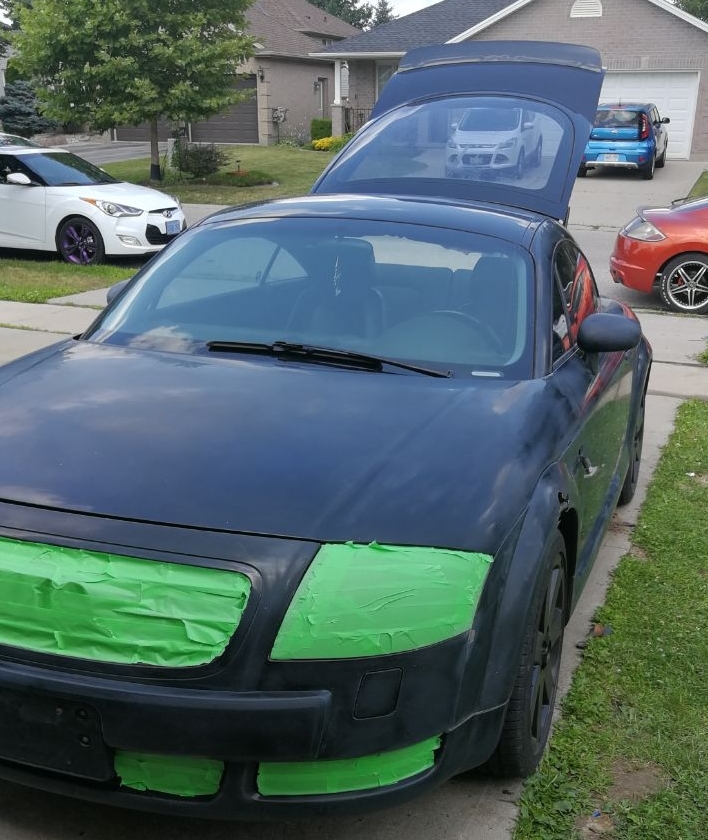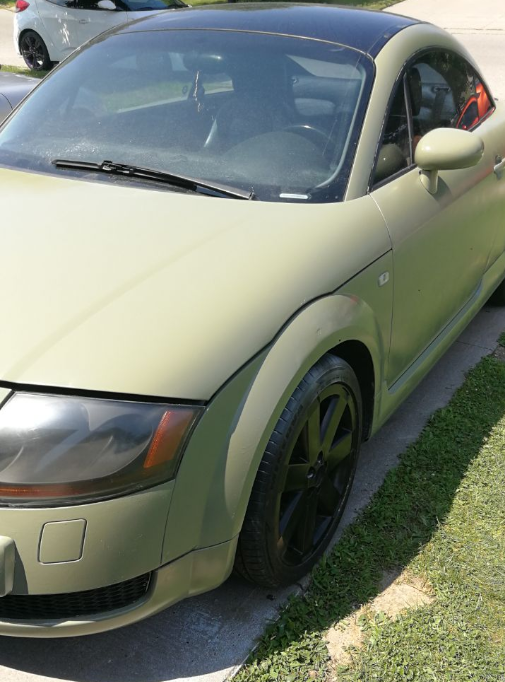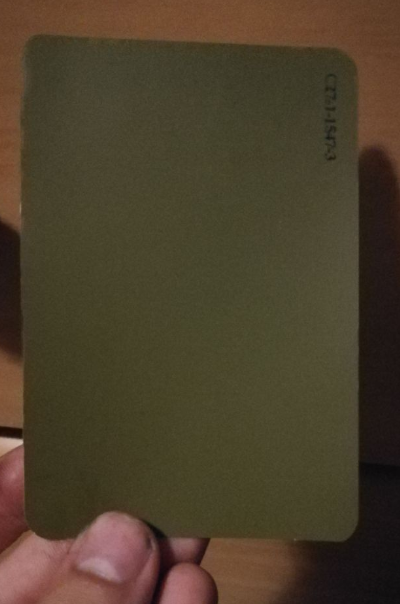Post by Sabertooth on Aug 3, 2019 9:06:55 GMT -5
Alright, so I got bored and decided to try out a roller paint job. It's literally where you paint a car using foam rollers and brushes. The paint type I find most commonly suggested to be used is an oil based alkyd rust paint. These paints do not require clear coat, and are designed for outdoor use. They are hard paints, so should resist stone chips and weather damage, while also being waterproof. Most paint stores will be able to mix colours of this type of paint for you.
The sacrificial vehicle was my TT because why not, right?
For the first step, begin scuffing up the paint surface. You want to give something for the paint to adhere to, and a shiny waxed layer or just polished clearcoat won't cut it. I used a 120 grit sanding block, and found it worked well. The car will then be dusty, so wash it off with a clean damp rag. Next you can use a second clean damp rag to get the leftover dust, windex, or a professional product for cleaning cars for paint prep. I used water because I wanted to see how minimal you can go on it. It turned out quite clean. There won't be any scrubbing, as the sanding will have loosened up all surface contaminants.

If you have any body work repairs to do, now is a great time. I filled behind my holes with expanding foam, shaped it as needed, and then put on bondo and sanded that to the right shape.
I suck at taking pictures while I work, but here it is after the second coat was put on. Use light coats, even if it doesn't fully cover the base colour first try. It'll save you sanding time later.


Once it's fully painted, let it cure for at least 2 days if it's outdoors, then you can begin wet sanding. If you did heavy coats, there will be a lot of marks to sand out. If you did light coats, it won't be as bad.
Once the wet sanding is done, you can step up to using a polishing wheel. That should get you a high level of shine. I'm skipping this step, as I'm actually trying to dull the shine out of mine. So far, my experience is that it's doable for sure, and passes the 10 foot test even when it's not yet sanded. I haven't finished yet, I'll post an update when it's sanded, then again when it's complete.
I suspect that this technique is best for flat paints, however nobody in my town could mix me a flat oil based alkyd rust paint in anything but super light colours. I did however want a darker colour, and I will probably be going over the car a second time after some tint is added to darken it up. I used about half a gallon of paint, and spent $55 Canadian on my gallon. The sanding blocks cost me $3, and rollers cost $6. So for a $64 paint job, it's unbeatable.
The sacrificial vehicle was my TT because why not, right?
For the first step, begin scuffing up the paint surface. You want to give something for the paint to adhere to, and a shiny waxed layer or just polished clearcoat won't cut it. I used a 120 grit sanding block, and found it worked well. The car will then be dusty, so wash it off with a clean damp rag. Next you can use a second clean damp rag to get the leftover dust, windex, or a professional product for cleaning cars for paint prep. I used water because I wanted to see how minimal you can go on it. It turned out quite clean. There won't be any scrubbing, as the sanding will have loosened up all surface contaminants.

If you have any body work repairs to do, now is a great time. I filled behind my holes with expanding foam, shaped it as needed, and then put on bondo and sanded that to the right shape.
I suck at taking pictures while I work, but here it is after the second coat was put on. Use light coats, even if it doesn't fully cover the base colour first try. It'll save you sanding time later.


Once it's fully painted, let it cure for at least 2 days if it's outdoors, then you can begin wet sanding. If you did heavy coats, there will be a lot of marks to sand out. If you did light coats, it won't be as bad.
Once the wet sanding is done, you can step up to using a polishing wheel. That should get you a high level of shine. I'm skipping this step, as I'm actually trying to dull the shine out of mine. So far, my experience is that it's doable for sure, and passes the 10 foot test even when it's not yet sanded. I haven't finished yet, I'll post an update when it's sanded, then again when it's complete.
I suspect that this technique is best for flat paints, however nobody in my town could mix me a flat oil based alkyd rust paint in anything but super light colours. I did however want a darker colour, and I will probably be going over the car a second time after some tint is added to darken it up. I used about half a gallon of paint, and spent $55 Canadian on my gallon. The sanding blocks cost me $3, and rollers cost $6. So for a $64 paint job, it's unbeatable.



